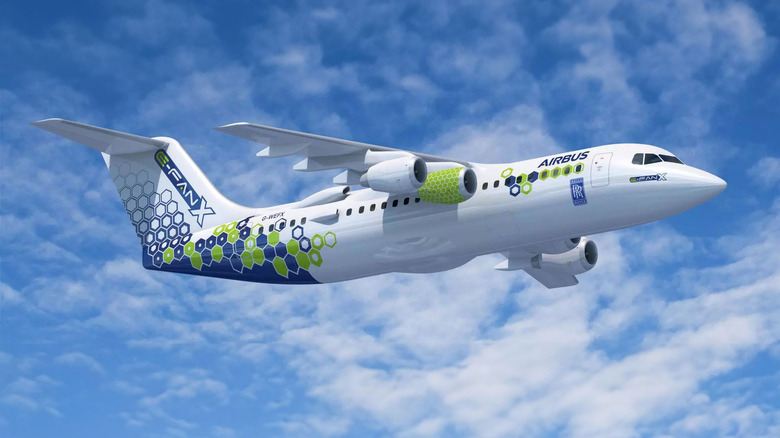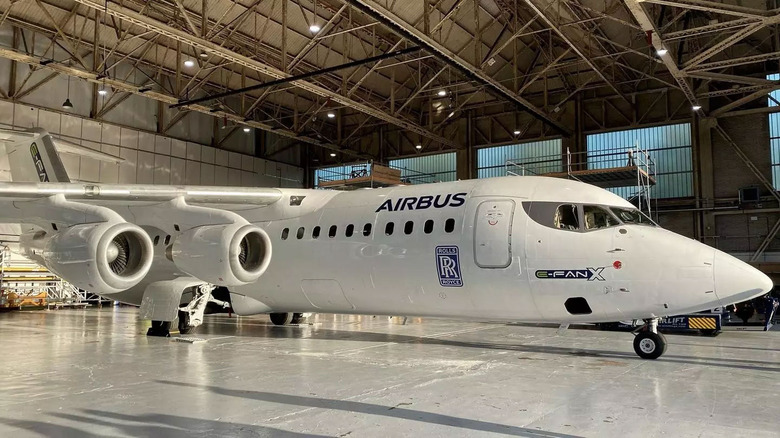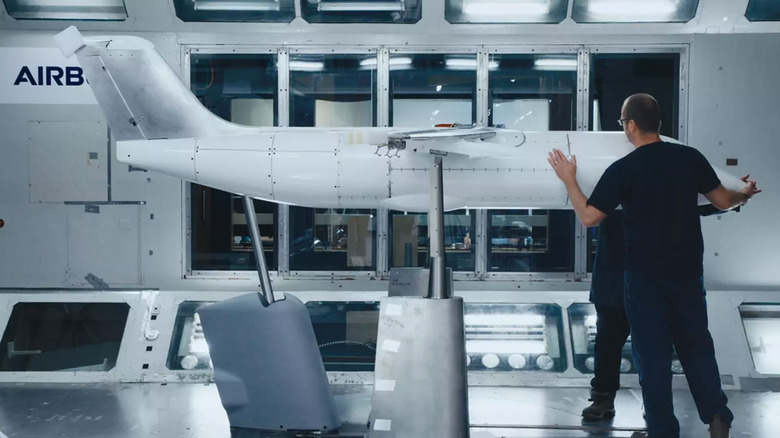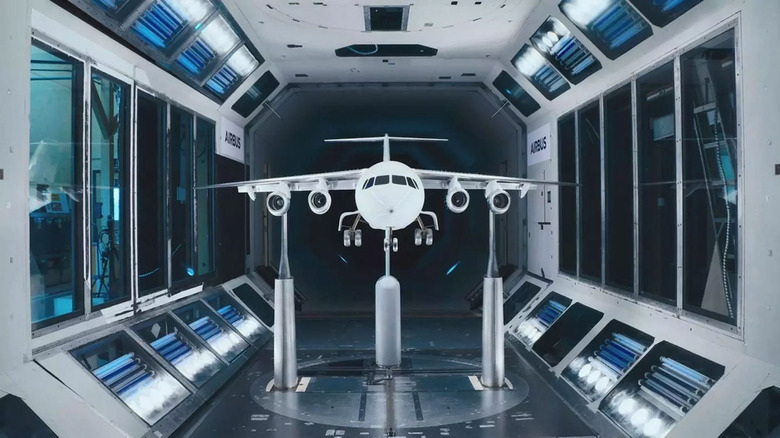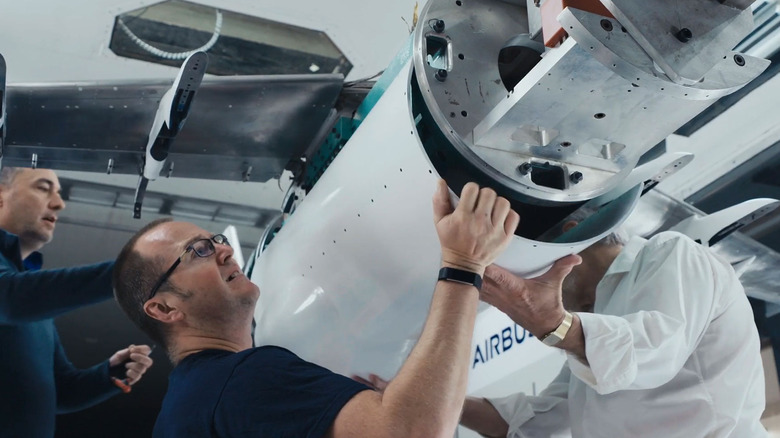E-Fan X: The Canceled Collaboration Between Airbus And Rolls-Royce
Despite amazing aeronautic advancements over the past few decades, commercial airplanes still rely on jet fuel. Though some wouldn't believe a hybrid-electric aircraft could exist, that's precisely what Airbus and Rolls-Royce set out to do in 2017 with the E-Fan X.
Though the idea of an electric or hybrid commercial jetliner seemed far-fetched in 2017, the Airbus program opened up a whole train of thought that would go on to inspire future electric aircraft. Though the E-Fan X program would eventually be canceled in 2020 amid the COVID-19 pandemic, research and development completed for the E-Fan X program would provide essential insights to aerospace engineers.
While one could look at the multi-million dollar program as a failure as the plane never took flight, Airbus and Rolls-Royce did inspire the airplane industry to take a look at hybrid-electric flight more seriously, leading to tangible electric-powered aircraft that have been developed since the end of the project.
Research for the E-Fan X started with the CriCri
Though the E-Fan X Airbus and Rolls-Royce collaboration would occur seven years later in 2017, the true beginnings of Airbus' electric plane program started in 2010, with the development of the CriCri, the world's first fully electric four-engine airplane.
The CriCri was smaller than the commercial aircraft design of the E-Fan X. A fully electric, four-engine, single-pilot aircraft, the CriCri would go on to inspire future Airbus electric aircraft prototypes like the e-Genius, E-Fan 1.0, and E-Fan 1.1.
With each iteration, Airbus was learning more about electric flight and the potential for electric planes to one day replace traditional jet fuel engines altogether, with the E-Fan X serving as the planned first example of a commercial jetliner powered, at least in part, by an electric engine.
Unlike the E-Fan X, these projects resulted in a tangible airplane that took flight. On July 10, 2015, the E-Fan 1.1 would cross the English Channel, departing from France's Aquitaine region to Lydd, England, for a 37-minute flight.
What was the E-Fan X?
Partly financed by $74 million worth of funding from the UK government, the E-Fan X was a project that set out to design a hybrid electric aircraft with R&D led by Airbus, Rolls-Royce, and Siemens. Announced on November 28, 2017, at the Royal Aeronautical Society in London, the E-Fan X was the latest in a relatively shorter history of electric plane research that began in 2010 for Airbus.
According to the CTO of Rolls-Royce, Paul Stein, in a 2018 interview, the goal of the E-Fan X program was to serve as the "world's first passenger-carrying flying machine which uses hybrid electric technology."
The project was an interesting one. Take a British Aerospace 146 RJ100 — a short-haul regional airliner — and replace one of the four engines with a 2MW electric motor based on the M250 turboshaft engine. In addition to the 2MW motor, the E-Fan X would also possess externally mounted heat exchanges for liquid cooling systems and special intakes and exhaust for the mounted power generation system.
Lessons learned from the E-Fan X program
The first flight for the E-Fan X was scheduled to occur in 2021, but the plane was never built except for models used in tests. In April 2020, Airbus and Rolls-Royce announced the project's cancellation, pointing to the COVID-19 pandemic as one of the main reasons the plane never saw the light of day. Though a true test flight was never undertaken, plane models underwent several tests and provided key information for research and development of future hybrid-electric aircraft for the company.
Wind tunnel testing in 2020 on a replica model measuring 3.65 x 3.05 meters gave engineers at Airbus a better understanding of the aerodynamic impacts of air speeds up to 126 miles per hour. This would give engineers data on low-speed performance and handling qualities.
In addition to the wind tunnel testing, Airbus performed high-voltage power testing in Prague, Czech Republic, but practical testing of the 2MW engine never occurred.
E-Fan X inspired future electric aircraft programs
Overall, engineers at Airbus learned more about hybrid-electric propulsion in general and the implementation of high-voltage systems and batteries. Still, one wonders whether it justifies the project's millions of dollars in research, development, and hype.
Test flights would occur for the base BAe 146 that was to be converted to the hybrid-electric E-Fan X — with the E-Fan X logo on the side of the plane — but the program would be canceled outright before actual testing with the electric engine could occur.
More significant than the prototype that was never created was the project's impact on the rest of the industry, as interest in the project spurred other ideas, including future ideas for Airbus's electric-powered vertical take-off and landing (VTOL) aircraft.
Today, several plane manufacturers are pursuing electric flights, including Eviation's Alice, which took its first test flight in 2022 and ES-30 by Heart Aerospace, the first-ever commercial electric plane flight scheduled for flight in 2028.
